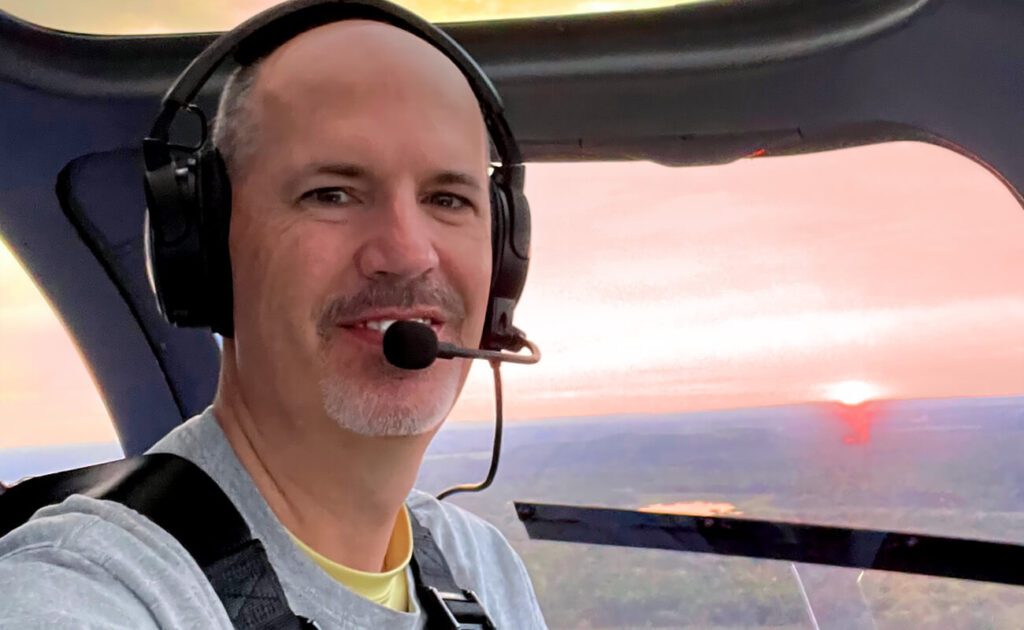Safety Check – Using Superior Judgment

Like many pilots, my email inbox seems to fill up almost daily with aviation newsletters. Sometimes, these newsletters include accident reports, which I will comb through as a helpful learning opportunity. However, I’ve noticed that the NTSB’s official, listed reason for a reported crash doesn’t always tell the full story.
For example, a pilot might take off without a weather briefing, fly into bad weather, run out of fuel while attempting to divert, and then lose control in the subsequent autorotation. The NTSB would list the cause of a crash as a “failure to maintain control of the helicopter,” which I find vague and unhelpful for newer pilots seeking to develop their flight decision-making skills.

I recently found myself in a situation that put my decision-making skills to the test. I had to complete a 900-mile ferry flight in an Enstrom 480B from our factory in Menominee, Michigan to the Dallas/Fort Worth Area of Texas. I was hoping to make the flight in one day and then fly home commercial.
Mother Nature had other plans. Dense fog rolled in, forcing a late departure from my home launchpad. Headwinds slowed my progress further. I landed in Tulsa, Oklahoma after more than seven hours of bumpy, hot flying, and I noted I still had at least another two and a half hours left in my journey. It was 5:30 p.m. and I was running out of daylight.
Here came my choice; should I keep flying or stop for the night?
Astronaut Frank Borman once said, “A superior pilot uses his superior judgment to avoid situations which require the use of his superior skill.”
Taking his words to heart, I added up my risk factors: fatigue from a long day, no co-pilot, darkened skies, and unfamiliar territory. I have a strict “three strike and no flight” rule when it comes to assessing risk factors. In the above example, there were just too many potential risk factors, so it was a no-brainer to stay in Tulsa for the night. I got a hotel room, ate some wonderful barbecue, and finished my trip in the morning.
Proper pre-trip planning made that decision possible. Before a long flight, I will typically hop online and scout out the airports along my route with the cheapest fuel price. These stations tend to be rural, out-of-the-way airports. But, for this leg of the journey, I purposefully chose to stop at Tulsa’s executive airport, despite the more expensive fuel cost, because I knew it would give me a convenient decision point. With plenty of nearby hotels and a crew car, I wouldn’t be tempted to push past my limits like I might have been elsewhere.
Again, I want to reiterate that accidents don’t just happen. They are usually a result of a chain of events. Remove one bad decision from the chain, and there’s no accident. Granted, we can’t make every decision ahead of time, but by anticipating those decisions and setting up options before we set off, we give ourselves tools to break that chain. Would choosing to persevere that night and keep flying to Texas have guaranteed a crash? Perhaps not, but the beauty of choosing safety is I’ll never have to find out.
For those of you wondering why I made the flight to Texas in the first place, I’m going to keep that a secret for now. Stay tuned for Enstrom’s big showing at HAI 2024 to find out!
Dennis Martin is the Chief Commercial Officer for Enstrom Helicopter Corporation. He has been with Enstrom for more than 14 years, working in both sales and engineering, and has traveled to over 25 different countries. Dennis is a commercial-rated rotary and fixed-wing pilot, as well as an A&P/IA.
About Enstrom Helicopter
From Rudy Enstrom’s early designs in 1943 to initial testing in a Michigan Quarry in 1957 to aircraft operating on six continents, Enstrom Helicopter Corporation has maintained a reputation for safety, value and performance. Based in Menominee, Michigan and proudly made in the United States, Enstrom has a rich history for design innovation. The goal is to provide helicopters to the customer’s exact specification and deliver support and maintenance worldwide.